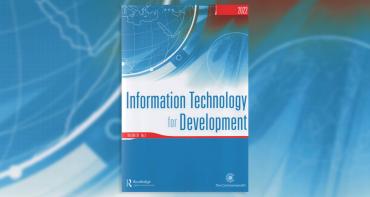The number of people at risk of eye disease trachoma, which can lead to blindness, has almost halved since 2018, said the Commonwealth Secretary-General Rt Hon Patricia Scotland QC.

The number of people at risk of eye disease trachoma, which can lead to blindness, has almost halved since 2018, said the Commonwealth Secretary-General Rt Hon Patricia Scotland QC.
Despite progress, she added, eye health remains a major public health challenge with more than 1.1 billion people around the world without access to optical care.
The Secretary-General was delivering a keynote address at a virtual event hosted by the Vision for the Commonwealth Coalition. The coalition, made up of six leading health organisations, takes action on the eye care commitment made by leaders at the 2018 Commonwealth Heads of Government Meeting (CHOGM).
Eye care for all is crucial
In 2018, Commonwealth leaders committed to taking action towards “achieving access to quality eye care for all, including eliminating blinding trachoma by 2020”.
Secretary-General Scotland said: “Building on that collective commitment, positive developments have been made on eye health across every Commonwealth region and commendable progress is being made in many member countries towards successfully eliminating trachoma, the leading infectious cause of blindness.”
Trachoma, which is entirely preventable, often begins in early childhood and progresses over the years, mostly in poor communities.
Many Commonwealth countries have begun to address children’s vision in schools, the Secretary-General said, which has improved their school performance, health and wellbeing.
She continued: “However, 91 million children live with vision loss and distressingly this figure is projected to rise. Compounding this, eye health and trachoma elimination efforts are also facing major disruption as a consequence of the pandemic and the increasing backlog of patient treatments following the interruptions of services as healthcare delivery is focused on combatting COVID-19 infections.”
Disease of poverty
About 167 million people globally live in 44 countries where trachoma is present, 90 per cent of whom are in Africa. The disease accounts for the blindness or visual impairment of about 1.9 million people. Commonwealth countries are especially affected.
However, there is good news. According to the ‘Eye Health in the Commonwealth’ report, in 2020, about 24 million people across the Commonwealth were at risk of trachoma down from 42 million in 2018.
The World Health Organization (WHO) last month announced trachoma has been eliminated in The Gambia. Malawi has reached the elimination threshold and is now in a two-year surveillance period. Vanuatu has submitted an elimination of trachoma report to WHO.
Secretary-General Patricia Scotland stressed the need to sustain the progress made throughout the Commonwealth, urging that eye care should be integrated within health systems.
She said: “It requires investment in eye health as a priority within universal health coverage plans, and in fulfilment of our collective Commonwealth commitment to building a more equitable, more inclusive and more resilient future in which everyone can thrive.”
Trachoma elimination – a teamwork
Opening the event, HRH The Countess of Wessex, Global Ambassador for the International Agency for the Prevention of Blindness, said: “What is clear is that this is very much about a team effort. It has to start at the top with government commitment but then it is down to the many incredible individuals who work within the eye care health system to deliver.
“Every one of them is playing their part in ensuring that the child, whose life might otherwise have been of no horizon, is now one with endless horizons.
“The woman, who has never seen her grandchild, can now help her daughter to look up to her. And the man, who has had to stop working and cannot feed his family, can now rebuild his life and offer his family a future.”
She added: “My hope is not to have to persuade you that this is the right thing to do, but that the proof of effectiveness is here for all to see that the ability to change life chances for all are within our grasp, and that this important area of health, remains a key priority for the Commonwealth, now and in the future.”
The ‘Eye Health in the Commonwealth’ report, produced by the Vision for the Commonwealth Coalition, will be shared at the Commonwealth Health Ministers Meeting this week.
Health ministers will consider further steps towards eliminating trachoma and proposals to ensure quality eye care for all, including better access to eye tests, affordable glasses and vision treatments for young people.
Notes to Editors
- The Vision for the Commonwealth Coalition is made up of:
- The International Agency for the Prevention of Blindness (IAPB) the overarching alliance for the global eye care sector with 150 members worldwide drawn from NGOs and civil society, corporate organisations, professional bodies and research and eye care institutions.
- Sightsavers
- The Fred Hollows Foundation of Australia
- OneSight
- Peek
- International Coalition for Trachoma Control
- The ‘Eye Health in the Commonwealth’ progress report is available here.



